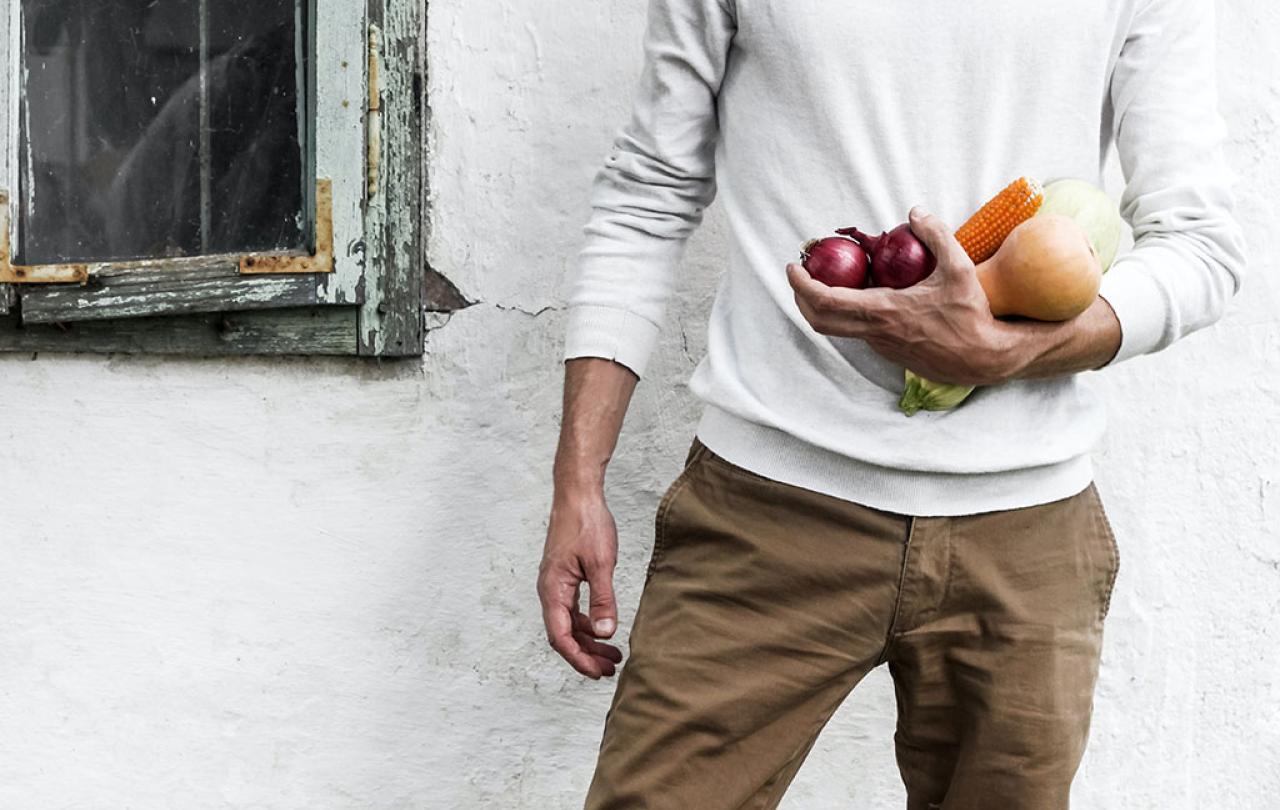
For many people, the month of January has been rechristened 'Veganuary’. Through this global campaign, which is celebrating its tenth anniversary this year, numerous people have embraced a plant-based diet.
Founded by a married couple from York, Veganuary has become a worldwide phenomenon, with more than 700,000 making the pledge last year. A YouGov poll suggests that numbers participating informally are far higher, perhaps as many as 4 per cent of Brits, 7 per cent of Americans, and almost 10 per cent of Germans. The campaign has also gained celebrity backing, with Paul McCartney, Joaquin Phoenix, Deborah Meadon, and Billy Eilish amongst the many star names backing the movement in recent years.
Yet there are some signs that the vegan bubble may have finally burst. The pace of interest in non-animal diets has started to level off and some analysts believe that “peak vegan” in the UK was way back in 2019. Figures by consumer intelligence company NIQ seem to confirm this. UK sales of both chilled and frozen meat alternatives have fallen sharply in recent years and prominent companies, including Oatly, Nestlé, Innocent and Heck, have withdrawn various vegan products.
Recent years have also seen an increasing number of posts and memes on social media feeds that are antagonistic towards the vegan lifestyle. It seems attitudes towards animals are slowly becoming incorporated into the cultural wars, with veganism often regarded as part of an over-righteous so-called “woke” ideology.
Some Christians subscribe to such an attitude and are hostile to those who embrace plant-based diets. Others, on the other hand, take a very different stance in considering their scriptures and theological traditions, emphasising the absolute necessity of a holistic awareness of diet, not least in light of animal cruelty, uncompassionate means of food production, and environmental concern. There are, after all, numerous affirmations of the precious and holy nature of the created order in the Bible. This would have differed profoundly from non-Judaic teaching in the Ancient Near East.
When he was surrounded by suffering and death... he came to regard a transcendent ‘reverence for life’ as the only way of living that made sense.
The moral imperative to care for the environment and value all creatures is clear from the very first pages of the Bible. After each day in the Genesis account of creation, God regards what he has formed as tov, a Hebrew word meaning good, pleasurable, and delightful. At the end of the creative process, God then looks at the whole of his handiwork, and he sees that the wonderful harmony of the complex, intricate, and balanced ecosystem is tov me’od, meaning ‘very good’. Later, in the New Testament, Jesus asserts that only God himself is good. It therefore follows that creation can, in some way, reveal the goodness of God directly.
And so there are many Christians who are drawn to an awareness that everything in this wonderful world has value and significance – the strangers we pass on the street, our pets who share our houses, the squirrels who dart across our paths in the park, the snowdrops breaking through the soil in our gardens, and even the slugs in our flowerbeds. No wonder the biblical images of the glorious eschatological, heavenly future are ones in which natural world is at harmony.
The German phrase that theologian Albert Schweitzer used to express the ramifications of the biblical concept of the goodness of the creation is ‘Ehrfurcht vor dem Leben’, which is often translated as ‘reverence for life’. The word Ehrfurcht, however, expresses far more than its English translation implies. It suggests an attitude of awe and ultimate respect, and so carries with it an overwhelming sense of moral responsibility towards creation. For Schweitzer this was no abstract intellectualism. His principle of ‘reverence for life’ came to him as he worked among the sick in the heart of tropical Africa. While prominent atheists like Richard Dawkins and Stephen Fry maintain that cruelty in nature is one of the main stumbling blocks of belief in the divine, it was not a sanitized version of nature that led Schweitzer to his God-centred conclusion. Rather, when he was surrounded by suffering and death, both in the hospital in which he worked and in the unforgiving natural world of the jungle around him, he came to regard a transcendent ‘reverence for life’ as the only way of living that made sense.
We are not only shockingly merciless towards each other, but we extend our cruelty to the creatures with which we share the planet.
Nature may well be ‘red in tooth and claw’, to use Lord Tennyson’s phrase, but humanity has been gifted with the potential to bring compassion and love to a world of pain and suffering. Most people already regard human life as inherently precious, but Christianity stands alongside other faiths in challenging people to consider the value the lives of non-human creatures. After all, Schweitzer suggested that every creature holds to the importance of its own life, albeit unconsciously, and this should lead people to solidarity with all forms of life. In this sense, an individual’s relationship with nature is far more intimate than we might think. ‘Wherever you see life,’ he wrote, ‘that is yourself!’
This recognition of humankind’s profound bond with other living creatures allowed Schweitzer to apply Jesus’ core teaching on love to the wider world – ‘the ethic of love widened into universality’, as he put it. This stands in marked contrast to the present status quo which views the only real value of non-human life to be its usefulness. No wonder that so many animals in modern industrial farming experience what Richard Holloway describes as a ‘double-dying’, as their everyday existence is as pitiful as their death. They live out wretched lifespans in disease-prone torture before being transported hundreds of miles in overcrowded trucks to their slaughter. But our society continues to turn a blind eye towards heartless factory farming practices. They are not only tolerated but justified with the argument that animals are little more than unfeeling machines who don’t really ‘suffer’ in the human sense of the word.
Such attitudes contribute to what the 1995 papal encyclical Evangelium Vitae refers to as the ‘culture of death’ of the modern world. We are not only shockingly merciless towards each other, but we extend our cruelty to the creatures with which we share the planet. In the large global corporations that dominate the food industry, animals are viewed as products to be reared to supply fast-food outlets. They are bred specifically for death. While nature itself is cruel, each creature is endowed with a fighting instinct for survival and a means to achieve it through armour, speed, disguise, poison or odour. We humans, though, offer no chance for such defensive capabilities to be utilised. Nothing is as uncaring and ruthless in nature as the hungry human.
Not that this recognition necessarily leads us to a purely plant-based diet. Even Schweitzer himself, who was a proponent of vegetarianism, ate meat on occasions. Perhaps the indigenous hunting communities of our world today can help us to bridge the gap between reverence for life and the killing of animals for food. While they are principally carnivores, many of these communities appreciate their utter dependence on the animals that are sacrificed so they might live and thrive. There is, therefore, a deep empathy and affection towards the hunted. In fact, compassionate ceremonies and rituals are often performed to show gratitude to the animals for the gift of their lives. The tribesmen of the Kalahari Desert will, for example, symbolically enter into the suffering of their dying prey by enacting their final death throes. Contrast this with our own food system, which is largely controlled by a small group of multinational corporations who attempt to hide the truth about what we are eating and the harsh treatment of both animals and workers in their factories.
In a YouGov survey, participants in Veganuary were asked to list their incentives for taking part. The main reason given, above environmental regard and personal health, was animal welfare. The concept of 'reverence for life’ speaks into this concern. As such, in embracing the concept that all life is equally worthy of our attention, respect, and love, Christians could have so much to offer contemporary debate. Their perspective could have huge implications on the moral and ethical matters that we face today – climate change, food production, health care, emerging technologies, animal care, AI, and energy development. ‘Do not do any injury, if you can possibly avoid it,’ the great Welsh Celtic saint Teilo is purported to have said while reflecting on creation. The anthropocentric, human-centred paradigm does not, then, reflect a truly Christian worldview. Instead, Christianity holds that every part of creation reflects God’s goodness and non-human life deserves respect for its own sake, not simply because of its usefulness. The whole, wonderful web of life is considered to be valued and loved by God, not merely one strand of it, and the daily call of the Christian is to live out the compassion, care, and love that such an awareness demands.





